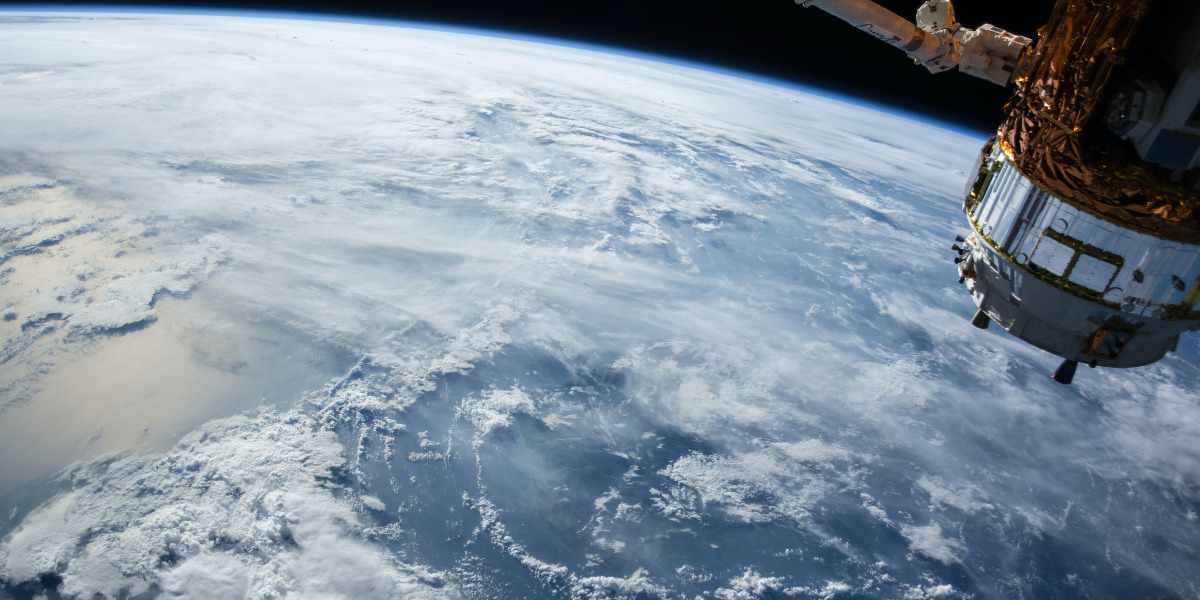AWS Public Sector Blog
Mission: Exploring Earth to space
Far above the clouds, one of the fastest growing missions for the public sector is taking place. Technological advances and open data initiatives provide new paths to explore space, impacting our lives here on Earth. From satellites to rovers, cloud computing and cloud-enabled technologies help us find answers to our biggest questions: How do we protect our planet? Can we send life to live outside of Earth? And how can we provide people the data to help us answer these questions?
At Amazon Web Services (AWS), our teams relentlessly focus on helping our customers achieve their missions. The AWS Cloud allows you to serve your mission better, cheaper, faster—and more securely.
By developing solutions using satellite data, providing startups with the support they need to improve the management of satellites, and enabling autonomous operations and robotics in space, AWS and the AWS Partner Network (APN) play a key role in developing the solutions in space and on Earth. These solutions could help put humans back on the moon and, eventually, Mars.
At the 2019 Earth and Space keynote at the AWS Public Sector Summit in Washington, DC, our speakers shared how space imagery helps us better understand the environment and having access to data can drive change on Earth.
Protecting life on Earth
One customer that continues to drive technological innovation in space is the United States National Aeronautics and Space Administration (NASA). Most recently, NASA scientists are trying to understand what turns an average solar storm into a superstorm. The more we understand what causes such space weather, the more we can improve our ability to forecast and mitigate the effects.
Working with AWS Professional Services and the Amazon Machine Learning (Amazon ML) Solutions Lab, NASA uses unsupervised learning and anomaly detection to explore the extreme conditions associated with superstorms. With the power and speed of AWS, analyses to predict superstorms can be carried out by sifting through as many as 1,000 datasets at a time.
To date, the initiative has aggregated observational data from 50+ satellite missions containing images, time-series, and miscellaneous telemetry data. Data is continually pre-processed and combined to develop visualizations that drive future heliophysics research and innovation.
This is just one example of how NASA relies on the cloud to bring space closer to us than we ever imagined possible. In 2012, NASA JPL had a goal to land a 2,000-pound rover on Mars completely automated.
As part of that Mars Rover mission, NASA Jet Propulsion Laboratory (JPL) worked with AWS to process and share images from Mars. Raw images from the Rover were immediately accessible to anyone via their smart devices—powered by AWS. NASA JPL was able to stream 150 TB of data in just a few hours, garnering 80,000 requests per second. This was beyond what they could handle using traditional infrastructure, but the AWS Cloud provided them with the scalability and elasticity needed to meet demand.
NASA is gearing up for their next launch this July when NASA’s Mars 2020 Rover heads to the red planet.
Sending data (and humans) to space
Whether your next mission is to Mars or you are staying Earth-side, satellite data offers customers a way to build applications that help humans explore space and improve life here on Earth.
Customers use AWS Ground Station’s global footprint to downlink data when and where they need it, get timely data, and build new applications quickly based on readily available satellite data. All of this is possible without having to buy, lease, and maintain complex and expensive infrastructure.
Another customer, Maxar Technologies, is preparing to launch its new WorldView Legion constellation next year. In the cloud, Maxar has the capability to plan collections and downlink imagery using AWS Ground Station so that insights about our changing Earth are immediately available. Their engineers are also working on innovative space exploration missions. These missions will enable a sustainable human deep-space presence in collaboration with international partners (the first piece for the NASA-led lunar Gateway), send the new rover to Mars in summer 2020, perform an on-orbit assembly test using a robotic arm called SPIDER, put a robotic arm on the Moon for scientific collections, refuel a Landsat satellite that wasn’t designed for on-orbit servicing, and more.
By using AWS Cloud storage, artificial intelligence, and ML services, Maxar extracts actionable, Earth intelligence from the imagery for its customers when and where it matters most.
Democratizing space data
AWS Ground Station helps companies democratize space data with ML capabilities as well. Another way is through open data. When data is shared on AWS, anyone can analyze it and build services on top of it.
For example, since going live in 1990, the Hubble Space Telescope has delivered images to broaden our understanding of the universe. Each image captured by the telescope is archived and made publicly available, at no cost, by NASA through the Space Telescope Science Institute (STScI). The Hubble images archive is used by a global community of astronomers, researchers, and engineers and has led to the discovery of distant galaxies and nebulae.
The availability of Hubble imagery alongside computing will give researchers the opportunity to break new ground. Even after the Hubble Telescope is decommissioned, the highly valuable dataset of space images—in the hands of researchers—will yield insights into our cosmos through the contributions of an empowered astronomy community.
Like space itself, the opportunities limits of exploration and innovation with space and Earth data are vast and endless. To explore space, we must tap a broader community, leverage public-private partnerships, and recruit students to learn and become passionate about science and technology. Everyone can help to drive meaningful change.
We’re constantly thinking about the future so that you have the tools you need as your mission evolves. If you have a space exploration mission or could benefit from satellite data, please comment below.
